Post by farmgal on Nov 20, 2012 1:15:23 GMT -5
November 21 is the 326th day of this leap year in the Gregorian calendar.
There are 40 days remaining until the end of the year.
Countdown until Obama should have been leaving Office
www.obamaclock.org/
Days until coming elections:
www.daysuntil.com/Election-Day/index.html
U.S. Debt Clock: www.usdebtclock.org/
164 BC Judas Maccabaeus, son of Mattathias of the Hasmonean family, restores the Temple in Jerusalem. This event is commemorated each year by the festival of Hanukkah.
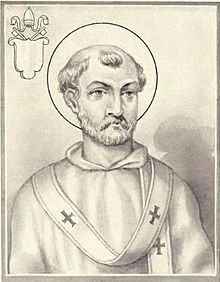
235 Anterus was elected pope, a position he would hold for only a few weeks (d. 3 January 236).
en.wikipedia.org/wiki/Anterus
1638 A general assembly at Glasgow (through 20 December) abolished the episcopal form of church government, adopted the presbyterian form in its place, settled liturgy and canons and gave final constitutional form to the Church of Scotland.
en.wikipedia.org/wiki/Church_of_Scotland
1776 Washington orders General Lee to New Jersey In what proved a fateful decision on this day in 1776, Continental Commander in Chief General George Washington writes to General Charles Lee in Westchester County, New York, to report the loss of Fort Lee, New Jersey, and to order Lee to bring his forces to New Jersey.
Lee wanted to stay in New York, so he dawdled in departing and crossing the small state of New Jersey to the Delaware River, where Washington impatiently awaited the arrival of his reinforcements. Lee, who took a commission in the British army upon finishing military school at age 12 and served in North America during the Seven Years' War, felt slighted that the less experienced Washington had been given command of the Continental Army and showed no inclination to rush.
Famed for his temper and intemperance, the Mohawk had dubbed Lee "Boiling Water." Lee was an adopted tribesman through his marriage to a Mohawk woman, but his union apparently failed to quell his interest in prostitutes. On December 13, Lee left his army, still dallying on its way to join Washington, and rode—with minimal guard--in search of female sociability at Widow White's Tavern in Basking Ridge, New Jersey. It was there that British Lieutenant Colonel Banastre Tarleton and the 16th Queen's Light Dragoons captured him on the morning of December 15.
Former comrades in the British army, Tarleton and Lee were now captor and captive. After being disappointed in his efforts to secure a lucrative royal appointment, Lee had retired to the colonies in 1773 and quickly joined the Patriot cause. Tarleton had sworn in a London club that he would hunt down the traitor to the crown and relieve him of his head. Fortunately for Lee, Tarleton failed to keep his promise, although the vain general may well have preferred a quick end to the humiliation of being led from Widow White's Tavern to New York City in his nightdress.
The British rejoiced at the capture of the Patriots' best-trained commander, while Washington fruitlessly negotiated for his release. Meanwhile, Lee enjoyed his captivity, even drafting a battle plan for his captors from plush accommodations in which his personal servant maintained his three rooms and no doubt served his food and wine in a most civilized fashion. The British did not act upon his plan, and Lee reported to Valley Forge upon his release in May 1778. After a series of arguments with Washington, Lee was suspended from the army in December 1778 and dismissed in 1780.
en.wikipedia.org/wiki/Charles_Lee_(general)
1789 North Carolina ratifies the United States Constitution and is admitted as the 12th U.S. state.
en.wikipedia.org/wiki/North_Carolina
1791 First Catholic college in US, Georgetown, opens. Construction on Georgetown's first buildings began in 1788, the first student was admitted in 1791, and classes commenced in early 1792. The date that is now officially recognized for Georgetown's foundation January 23, 1789 is when the Jesuit religious order acquired the title to the land that became the core of the campus. On November 21, 1791, the first student entered Georgetown College. He was William Gaston, the son of a widow from New Bern, North Carolina. Mrs. Gaston agreed to an annual tuition of six pounds ten shillings, payable in six-month installments, with room and board adding 27 pounds 10s. to the total bill.
1798 A four day storm was in progress in the northeastern U.S. The storm dropped a foot of snow on New York City and New Haven, and as much as three feet in Maine and New Hampshire. The snowstorm ushered in a long and severe winter, in some places the ground remained covered with snow until the following May. (David Ludlum)

1846 The word anesthesia was coined by Oliver Wendell Holmes in a letter to William Thomas Green Morton, the surgeon who gave the first public demonstration of the pain-killing effects of ether.
1852 Union Institute was chartered by the Methodists in Randolph County, NC. Renamed Trinity College in 1859, the campus moved to Durham in 1892. Tobacco magnate James B. Duke endowed the school with $40 million in 1924, upon which its name was changed to Duke University.
en.wikipedia.org/wiki/Duke_University

Judah P. Benjamin
Benjamin practiced law and bought a sugar plantation near New Orleans. He became a representative in the Louisiana state legislature in 1842, and he was elected to the U.S. Senate in 1852. While there, he became a close friend of Jefferson Davis, who was then a Mississippi senator. Benjamin resigned during the secession crisis of 1860 and 1861, even before Louisiana officially left the Union. Davis selected Benjamin as the Confederacy's first attorney general, and he quickly became the president's most trusted advisor. After the Battle of First Bull Run, Secretary of War Leroy Walker resigned amid criticism that the Confederate army did not pursue the defeated Yankees. Davis appointed Benjamin to the position.
Although Benjamin had no military experience, his appointment allowed Davis to dominate Confederate military affairs. Placing his trusted friend in the position of secretary of war ensured that Davis would not be challenged on important military decisions. Benjamin efficiently managed the day-to-day work of the war department, but he began to quarrel with some of the top generals who resented taking orders from a non-military bureaucrat. Benjamin also drew unfair criticism because of his religion--many openly questioned his loyalty because of his Jewish faith.
When Roanoke Island fell to the Yankees in March 1862, criticism of Benjamin peaked. Many censured him for not sending men and supplies to the island's garrison. Furthermore, the war was going badly for the Confederates in the West. Davis recognized that the storm of complaints was crippling Benjamin's ability to perform his duty, so he appointed Benjamin secretary of state when Robert M. T. Hunter resigned that position. As the outlook for the Confederacy grew bleaker in 1863 and 1864, Benjamin floated the idea that the South could obtain foreign recognition only by promising emancipation. This radical concept fell on deaf ears until the last weeks of the war.
When the Confederacy finally collapsed, Benjamin fled with the rest of the Confederate government to Danville, Virginia. When President Lincoln was assassinated, it was discovered that Benjamin had ties to the Surratt family, which was implicated in the conspiracy. Fearing capture and prosecution, Benjamin fled the country. He settled in England and practiced law there, often visiting his wife and daughter in Paris. During the rest of his life, Benjamin rarely spoke of his service to the Confederacy. He died in Paris in 1884.
en.wikipedia.org/wiki/Judah_P._Benjamin


1873 A papal encyclical of Pope Pius IX (1792–1878) condemned the “Old Catholic” movement, which rejected the papal infallibility decree of the First Vatican Council.
en.wikipedia.org/wiki/Pope_Pius_IX#First_Vatican_Council
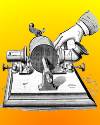
1916 World War I: A mine explodes and sinks HMHS Britannic in the Aegean Sea, killing 30 people.

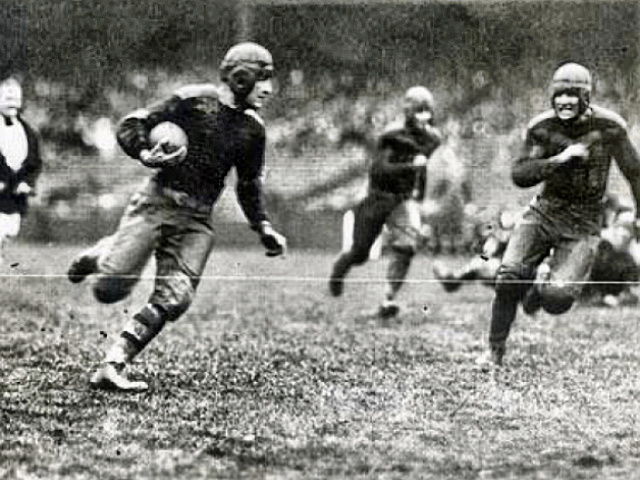
1927 The first Columbine Massacre, sometimes called the Columbine Mine massacre to distinguish it from the Columbine High School massacre, occurred in 1927, in the town of Serene, Colorado. A fight broke out between Colorado state police and a group of striking coal miners, during which the unarmed miners were attacked with machine guns. It is unclear whether the machine guns were used by the police or by guards working for the mine. Six strikers were killed, and dozens were injured.

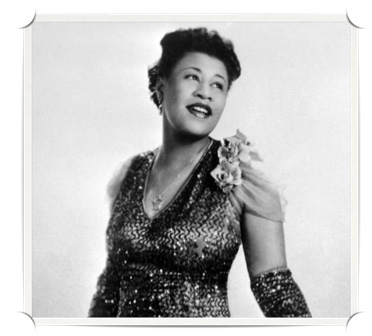
Born in 1917 in New York City and orphaned at the age of 15, Ella Fitzgerald was a high-school dropout and a ward of New York State when she made her way to the Apollo that autumn night in 1934 with two of her girlfriends. "It was a bet," she later recalled. "We just put our names in....We never thought we'd get the call." But Ella did get the call, and as it happened, she came to the stage immediately after a talented and popular local dance duo. Afraid that she couldn't measure up to the dancing talents of the preceding act, Ella was petrified. "I looked and I saw all those people, and I said, 'Oh my gosh, what am I going to do out here?'" she told National Public Radio decades later. "Everybody started laughing and said, 'What is she gonna do?' And I couldn't think of nothing else, so I tried to sing 'The Object of My Affection.'"
By her own admission, Fitzgerald was blatantly imitating the singer who popularized that song, Connie Boswell of the Boswell Sisters, and the first few notes were a disaster. Rushing onstage to protect her from the jeers of the notoriously tough Apollo Theater crowd, however, was the famous Amateur Night master of ceremonies, Ralph Cooper, who helped Ella gather her wits and try again. On her second attempt, she brought down the house.
Within the year, Ella Fitzgerald had been discovered by Chick Webb, to whose band she was legally paroled by the State of New York while still shy of her 18th birthday. It was with Webb's band that she scored her career-making hit, "A-Tisket A-Tasket" in 1938, but it was as a solo performer that she would become a jazz legend in the late 1940s and early 1950s as a revolutionary innovator in vocal jazz.



1948 The religious program Lamp unto My Feet first aired over CBS television. The Sunday morning broadcast featured programs on cultural as well as religious themes. It was produced for CBS News by Pamela Ilott and became one of TV’s longest-running network shows, airing through January 1979.
en.wikipedia.org/wiki/Lamp_Unto_My_Feet





1964 Second Vatican Council: The third session of the Roman Catholic Church's Ecumenical Council closes.
en.wikipedia.org/wiki/Second_Vatican_Council
1967 Vietnam War: American General William Westmoreland tells news reporters: "I am absolutely certain that whereas in 1965 the enemy was winning, today he is certainly losing."
1967 Excessive rains in southern California caused the most severe flooding and the most damaging mmud slidesin 33 years. Downtown Los Angeles received eight inches of rain, and 14 inches fell in the mountains. (David Ludlum)
1967 Phillip & Jay Kunz fly a kite a record 28,000 feet. According to Guiness, "The single kite record is 22,500ft (min) - 28,000 ft. (max) 6860-8535m by Prof. Phillip R. Kunz and Jay P. Kunz at Laramie, Wyoming, USA on November 21, 1967."
1968 Sheri Schroeder, third child to Karen Schroeder, who lived beside the Love Canal chemical dump in the city of Niagara Falls, New York. It was the physical problems of her daughter at birth that prompted her mother to learn about the extent of the Love Canal environmental problem. A vigorous campaign brought it to the public's attention. Sheri was born with a heart that beat irregularly and had a hole in it, bone blockages of the nose, partial deafness, deformed ear exteriors, and a cleft palate. From about the late 1930s, the Hooker Company, manufacturer of pesticides, plasticizers, and caustic soda, used the abandoned canal to dump over 20,000 tons of toxic waste residues which leaked into local homes.
1969 U.S. President Richard Nixon and Japanese Premier Eisaku Sato agree in Washington, D.C. on the return of Okinawa to Japanese control in 1972. Under the terms of the agreement, the U.S. is to retain its rights to bases on the island, but these are to be nuclear-free.
1970 Vietnam War: Operation Ivory Coast - A joint Air Force and Army team raids the Son Tay prison camp in an attempt to free American prisoners of war thought to be held there.
1973 Rose Mary Woods said she accidentally caused part of 18-minute gap in a key Watergate tape. The following month a gap of over 18 minutes 30 seconds was discovered on the tape of the conversation between Richard Nixon and H. R. Haldeman on June 20, 1972. Woods was summoned to appear before Judge John J. Sirica for three days of questioning. She testified that she must have deleted the material by mistake. She added that "all I can say is that I am just dreadfully sorry."
1980 Dallas' "Who Shot JR?" episode (Kristen) gets a 53.3 rating. "Who shot J.R.?" was a national obsession. The 1980 event on the CBS television series Dallas when the character of J.R. Ewing (played by Larry Hagman) was shot by an unknown assailant (in the episode titled "A House Divided") in the final scene of the 1979-1980 TV season. During the summer of 1980, the question, "Who shot J.R.?", was being asked in everyday conversations across America and worldwide. Ultimately, the person who pulled the trigger was revealed in the classic "Who Done It?" episode that aired on November 21, 1980. It was one of the highest-rated episodes of a TV show ever aired.
1980 - A deadly fire breaks out at the MGM Grand Hotel in Paradise, Nevada (now Bally's Las Vegas). 87 people are killed and more than 650 are injured in the worst disaster in Nevada history.
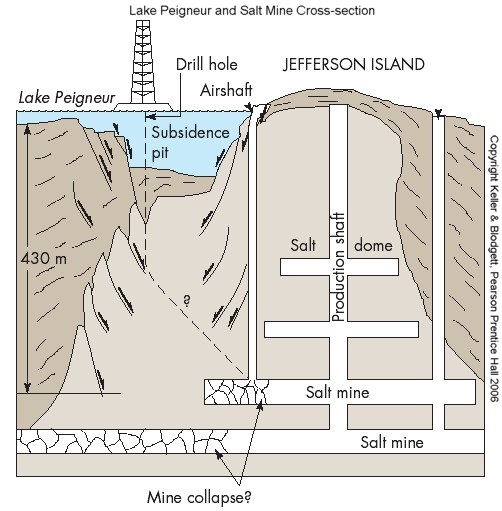
1985 Hurricane Kate made landfall during the evening hours near Mexico Beach, FL. Wind gusts to 100 mph were reported at Cape San Blas FL. It was the latest known hurricane to hit the U.S. so far north. (The Weather Channel)
1985 United States Navy intelligence analyst Jonathan Pollard is arrested for spying after being caught giving Israel classified information on Arab nations. He is subsequently sentenced to life in prison.

1987 Squalls in the Lower Great Lakes Region and the Upper Ohio Valley produced 14 inches of snow at Snowshoe WV, and nearly eight inches at Syracuse NY. Eleven cities in the eastern U.S. reported record low temperatures for the date. Record lows included 21 degrees at Pinson AL, 9 degrees at Syracuse NY, and 8 degrees at Binghamton NY. Gale force winds lash the Middle and Northern Atlantic Coast, and the strong northwesterly winds produced wind chill readings as cold as 30 degrees below zero. Winds gusting to 60 mph at Trumansburg NY toppled a chimney onto a nearby truck. (The National Weather Summary) (Storm Data)
1988 High winds accompanied rain and snow in the northeastern U.S. Caribou ME received eight inches of snow in six hours, and Fort Kent ME was blanketed with a total of fourteen inches of snow. (The National Weather Summary) (Storm Data)
1989 The storm which produced thunderstorms and high winds in the northeastern U.S. the previous day, produced snow and high winds in New England, with blizzard conditions reported in Maine. Winds gusted to 55 mph at Boston MA, and reached 58 mph at Augusta ME, and hurricane force winds were reported off the coast of Maine. Snowfall totals ranged up to 18 inches at Vanceboro ME, with 17 inches at South Lincoln VT. There were thirty-five stormrelated injuries in Maine. (The National Weather Summary) (Storm Data)
1995 The Dayton Peace Agreement is initialed at the Wright Patterson Air Force Base, near Dayton, Ohio, ending three and a half years of war in Bosnia and Herzegovina. The agreement is formally ratified in Paris, on December 14 that same year.
Births
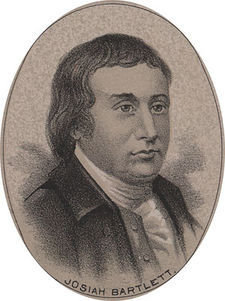
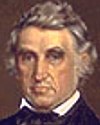
1817 Richard Brooke Garnett (d 1863) career United States Army officer and a Confederate general in the American Civil War. He was killed during Pickett's Charge at the Battle of Gettysburg.
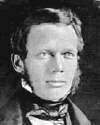


1837 John Henry Yates, in Batavia, New York, American clergyman and Gospel song writer, Faith Is the Victory (d. 5 Sep 1900, Batavia, New York).
www.hymntime.com/tch/bio/y/a/t/yates_jh.htm
www.hymntime.com/tch/htm/f/a/i/faithist.htm

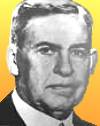
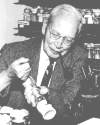

1904 Coleman Randolph Hawkins (d 1969) American jazz tenor saxophonist. Hawkins was the first important jazz musician to use the instrument. As Joachim E. Berendt explained, "there were some tenor players before him, but the instrument was not an acknowledged jazz horn". While Hawkins is most strongly associated with the swing music and big band era, he had a role in the development of bebop in the 1940s.
1906 Elizabeth George Speare (d 1994) American children's author who won many awards for her historical fiction novels, including two Newbery Medals. She has been called one of America’s 100 most popular children’s authors and much of her work has become mandatory reading in many schools throughout the nation. Indeed, because her books have sold so well she is also cited as one of the Educational Paperback Association’s top 100 authors.
1907 James Alonzo "Jim" Bishop (d 1987) American journalist and author, began work as a copy boy at the New York Daily News. In 1930, he got a job as a cub reporter at New York Daily Mirror, where he worked until 1943, when he joined Collier's Magazine. He wrote biographical books about notable figures, and Christian-themed books. His book The Day Lincoln Was Shot was published in 1955, and became an instant best-seller. Bishop also wrote The Day Christ Died, The Day Christ Was Born, and The Day Kennedy Was Shot. Perhaps his most critically acclaimed book was FDR's Last Year: April 1944-April 1945, which brought to public awareness the secrecy that surrounded President Franklin D. Roosevelt's declining health during World War II.
en.wikipedia.org/wiki/Jim_Bishop
1920 Stanley Frank "Stan" Musial Polish-American former professional baseball player who was elected to the Baseball Hall of Fame in 1969. Nicknamed "Stan the Man", Musial played 22 seasons in Major League Baseball (MLB) for the St. Louis Cardinals from 1941 to 1963. A 24-time All-Star selection, Musial accumulated 3,630 hits and 475 home runs during his career, was named the National League's (NL) Most Valuable Player (MVP) three times, and was a member of three World Series championship teams.
1933 Henry Warren "Hank" Hartsfield, Jr. retired United States Air Force officer and a former USAF and NASA astronaut who logged over 480 hours in space.

en.wikipedia.org/wiki/Larry_Mahan
1944 Richard Joseph "Dick" Durbin senior United States Senator from the U.S. state of Illinois and Democratic Party Whip, the second highest position in the Democratic Party leadership in the Senate, and became Majority Whip when Democrats took control of the Senate on January 3, 2007. In April 2006, Time magazine identified Durbin as one of "America's 10 Best Senators." He was the first United States Senator to support the presidential candidacy of Barack Obama, then the other senator from Illinois. He was reelected in November 2008 for a term ending in January 2015.
Deaths

496 Pope Gelasius I, the third pope of African origin.
en.wikipedia.org/wiki/Pope_Gelasius_I
615 Columbanus, in Bobbio, Italy, missionary scholarly Irish monk, (b. ca. 543).
en.wikipedia.org/wiki/Columbanus
1899 Garret Augustus Hobart (b 1844) 24th Vice President of the United States and the sixth Vice President to die while in office.
1904 Luigi Palma di Cesnola (b 1832) Italian-born American Army officer, archaeologist, and museum director who amassed one of the largest collections of antiquities from Cyprus. In 1865, having been naturalized, he was appointed U.S. consul to Cyprus, where he remained 11 years, gathering some 35,000 objects from nearly 70,000 tombs. The bulk of his collection was acquired by the Metropolitan Museum of Art, New York City (1872), of which he was director from 1879 to 1904. The accuracy of the records that he made of objects from his collection was repeatedly challenged, but modern research has tended to vindicate him. His published works include Cyprus: Its Ancient Cities, Tombs, and Temples (1877).

1945 Robert Charles Benchley (b 1889) American humorist best known for his work as a newspaper columnist and film actor. From his beginnings at the Harvard Lampoon while attending Harvard University, through his many years writing essays and articles for Vanity Fair and The New Yorker, and his acclaimed short films, Benchley's style of humor brought him respect and success during his life, from New York City and his peers at the Algonquin Round Table to contemporaries in the burgeoning film industry.

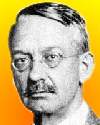
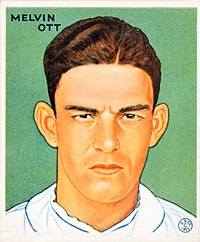

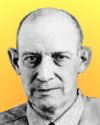
1973 Thomas Minor Pelly (b 1902), American politician born in Seattle, Washington, served as a member of the United States House of Representatives from 1953 to 1973. He represented the First Congressional District of Washington as a Republican. Due to health concerns, he did not run for re-election in 1972. Pelly died while in California in 1973.
1984 David Ernesto Fernandez was murdered in El Salvador. Fernandez served as pastor of ten congregations in eastern El Salvador that were part of the Salvadoran Lutheran Synod, a church in partnership with the Missouri Synod.
www.lutheranhistory.org/history/tih1121.htm

en.wikipedia.org/wiki/Carl_Owen_Hubbell
1993 Bill Bixby (b 1934) American film and television actor, director, and frequent game show panelist. His career spanned over three decades; he appeared on stage, in motion pictures and TV series, such as My Favorite Martian, The Courtship of Eddie's Father, and The Incredible Hulk.
2005 Hugh Sidey (b 1927) American journalist and worked for Life magazine starting in 1955, then moved on to Time magazine in 1957.
Christian Feast Day:
Pope Gelasius I
Presentation of the Blessed Virgin Mary
Feasts
The Entry of the Most Holy Theotokos into the Temple
en.wikipedia.org/wiki/Presentation_of_Mary
Saints
Saint Yeropolk-Peter, Prince of Vladimir in Volhynia (11th century)
Saint Colombanus of Ireland, abbot and founder of Luxeuil Abbey in France (615)
daysuntil.com/Election-Day/index.html
www.todayinsci.com/11/11_21.htm
www.christianhistorytimeline.com/lives_events/birthday/index.php
www.weatherforyou.com/cgi-bin/weather_history/today2S.pl
www.amug.org/~jpaul/nov21.html
en.wikipedia.org/wiki/November_21
www.scopesys.com/cgi-bin/today2.cgi
www.history.com/this-day-in-history/millions-tune-in-to-find-out-who-shot-jr
en.wikipedia.org/wiki/November_21_(Eastern_Orthodox_liturgics)
www.hymntime.com/tch/index.htm
www.lutheranhistory.org/history/tih1121.htm
